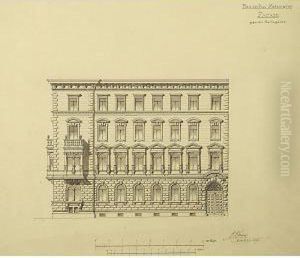Leopold Theyer Paintings
Leopold Theyer was an Austrian artist who lived during the late 19th and early 20th centuries. Born in 1867 in the Austro-Hungarian Empire, Theyer was part of a period of significant cultural and artistic development in the region. Despite the noteworthy transformations occurring in the art world at the time, including the advent of Modernism and the Vienna Secession movement, there is limited widely available information about Theyer's life and work.
Theyer's artwork was rooted in the traditions of his time, and he was likely influenced by the prevailing styles and the artistic atmosphere in Vienna, a city known for its rich cultural life. The Vienna Secession movement, for example, which included artists such as Gustav Klimt and Egon Schiele, was characterized by a break from the conservative style of the Vienna Künstlerhaus. However, it is not clear whether Theyer was directly associated with this movement or any other specific group of artists.
Leopold Theyer's death occurred in 1912, before the outbreak of World War I, which would bring about dramatic changes to Europe and its artistic landscape. During his relatively short life, Theyer would have witnessed the ebbs and flows of various artistic movements, but due to the scarcity of records, the impact of his work within this context is not well-documented. Art historians who study lesser-known artists from this era often rely on a combination of archival research, exhibition records, and the study of any surviving works to piece together an artist's biography.
While Theyer may not have gained the same level of recognition as some of his contemporaries, the study of artists like him can provide a more nuanced understanding of the art world during their time. Given the lack of extensive information on Leopold Theyer, those interested in his life and work might need to seek out specialized art historical research or visit regional archives and museums in Austria that may hold further details about his contributions to the art world.
